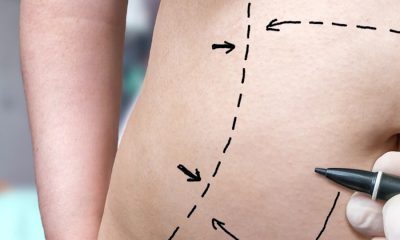It’s that time of year when we want to look forward to the possibilities a new year holds in store – while wanting to look as young and vibrant doing so. Preferably, let’s do it quietly (looking as young as possible, that is) without anyone knowing. It’s kind of a secret, and here it is.
With today’s plastic surgery knowledge, and the medical technology to match it, board certified surgeons are able to turn back those relentless hands of time and shave 5, 10, maybe even 20 years off your appearance without ever picking up a scalpel.
Start Up Top and Work Our Way Down, Quietly
If forehead creases just can’t be ignored anymore, injections of botulinum toxin (Botox, Dysport, and Xeomin) can provide a great and “silent” fix. In tiny doses, the product relaxes the clenched facial muscles that cause crow’s feet, frown lines, and the like. The injections take only a few minutes and cause little pain.
“Not every patient needs surgery. Not every patient wants surgery,” observes Reno-based board certified plastic surgeon Dr. Tiffany McCormack. “Especially when we’re looking at reducing the signs of aging in and around the forehead. The materials available to us now do a tremendous job.”
More Modern Chemistry to the (Quiet) Rescue!
Chemical peels are used to successfully remove old, dead cells from the outer layers of skin. The solution often has a mix of glycolic acid, lactic acid, salicylic acid, phenol, or trichloroacetic acid (TCA). It can take about 15 minutes to apply, and patients may feel some stinging and irritation. Over the next few days, the skin’s upper layers will peel, revealing newer, smoother-looking skin. Again, without a stitch!
A series of peels can reduce age spots, fine lines, acne scars, and wrinkles caused by sun damage or aging. Depending on the amount of aging you want to eliminate, you can have one every few weeks until you get the results you want. Deeper peels cause swelling and crusting at first, but have more dramatic results in the end. Patients can get moderate to deep peels again in 6 to 12 months.
Don’t Forget the Power of a Little Sand!
You may have heard of dermabrasion, a procedure that sands away the top layer of skin. It can treat severe sun damage, but it causes minor bleeding and requires a week of recovery time. Microdermabrasion is a non-surgical variety. Often called a “power peel,” it blasts the skin with tiny crystals that exfoliate the outer layer. This can reduce fine lines, brown spots, and mild acne scars – usually with little recovery time.
“There are areas on the body where surgery is not a great fit, like the décolletage,” explains McCormack.
How Ab0ut Sculptra Instead of a Scalpel?
Beyond Botox, facial fillers can provide incredible relief and rejuvenation when applied properly. The product Sculptra, specifically, can significantly introduce rejuvenation in the face by helping the body regrow collagen. “The injectable Sculptra [is great] because it makes your body make its own collagen,” shares McCormack. “Typically it is injected around the face.”
Moving beyond injectables, energy-based non-surgical devices are known to introduce significant results without a scalpel. “Ultherapy delivers energy to tissue levels which denatures collagen and causes your body to produce more collagen,” adds Dr. McCormack. “It’s a great system for just the right patient with the right expectations for what kind of lift and tightening they’re going to get. There are patients out there who are younger and who are just interested in just a little bit of tightening who are not yet a surgical candidate.”
The Options are Many, and Time is Short
One of the most important new trends in aesthetic plastic surgery is patients not having to wait for a moment of huge surgical changes. In the past, many would-be patients waited years, and even decades, until they reached a point where they were ready for a facelift or other major surgical procedures. The change would then be dramatic and hard to conceal, as they went from quite aged to heavily rejuvenated.
With the above-mentioned procedures and options, this is no longer the case. Patients in their 40’s and 50’s – and even 30’s – can begin with smaller procedures and maintain a healthy, youthful look, rather than waiting for the damage to reach a critical point. Not only do this help smooth the transition from young to old, but it may even push back the need for surgical treatments. If a patient is having injections, non-surgical energy applications, like Ultherapy, and peels, perhaps they won’t need a facelift until much later – if at all!
The best part? No scalpel required.

















Facebook
Twitter
Instagram
YouTube
RSS